Matching Game of Thrones Characters with their Pro Wrestling Archetypes


If you’re anything like us at Paste, then every week you look forward to plopping down on the couch and watching a drama of power, prestige and duplicity unfold. A world where titanic men and women do battle using their wits, guile and physical prowess to forge alliances and rise to positions of glory. A world filled with fantastical characters, dastardly villains and shocking betrayals, where wholesale battle and bloodshed is always inevitable.
I’m speaking, of course, about pro wrestling.
Yes, pro wrestling. Is there any more apt comparison for HBO’s Game of Thrones on TV than Vince McMahon’s WWE? They’re mirrors of one another in so many ways: The Seven Kingdoms are the federation itself, and dominion of the Iron Throne is symbolized by the world championship. Lesser title belts equate to various lordships, stewardships and fiefdoms. These titles create exactly the same kind of scheming and power struggles we see on GoT.
But more than the title belts, the comparisons are most appropriate for the characters. Pro wrestling, like it or not, has had a major role in codifying “hero” and “villain” stock characters in American pop culture over the last 50 years. Archetypes like “the villainous foreigner” or “the evil aristocrat” have been common for decades, while wrestling in the ‘90s also reflected pop culture’s growing interest in badass, self-concerned antiheroes rather than valorous, “white bread” do-gooders, which have increasingly been deemed old fashioned. Game of Thrones has much of the same moral DNA—there are no simplistic “good guys,” and anyone who fancies himself as such will likely end up dead immediately. It’s shades of grey, all the way down.
Therefore, in celebration of Game of Thrones finally returning for its (sadly shortened) season 7 on July 16, here are 16 pro wrestling character archetypes, and the GoT characters who fit them best.
![]()
Babyfaces
Babyfaces, or simply “faces,” are the protagonists and “good guys” of the classic good vs. bad duality of wrestling—in short, they’re the people who the audience is supposed to be cheering for in a standard wrestling match. Of course in the modern wrestling climate, things aren’t quite that simple. The classic babyface has evolved over the years to often blur the line between valiant and heelish (i.e., villainous) actions, but there are still significantly fewer babyface tropes than there are heel tropes. Also unsurprisingly: There are very few “pure” babyfaces in the Game of Thrones universe, where every alignment is fraught with shades of grey. Still, I was able to find a few perfect examples.
Generic do-gooder babyface
Game of Thrones characters: Ned Stark, Jon Snow
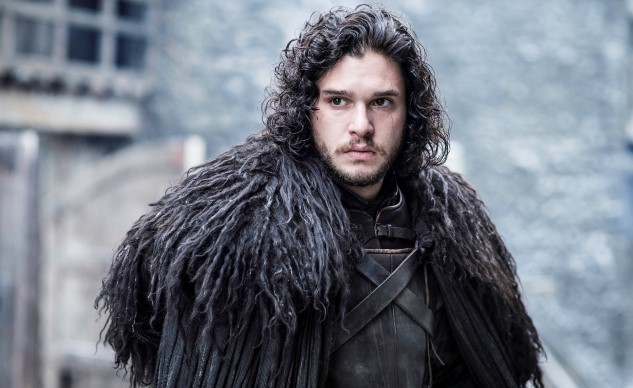
This is the classic wrestling good guy—the immaculate, honorable superhero in the mold of Hulk Hogan or John Cena who never gives up, eats his vitamins, says his prayers, etc. More than anything else, he’s concerned with fairness, honor and invariably doing “what is right.” Suffice to say, there’s very few of these types of guys in Westeros, but Ned Stark certainly fits the bill. Ned’s most crippling weakness is his honesty and incapability toward guile—he wants to defeat his opponents in a one-on-one contest rather than scheming behind their backs, which is babyface 101. When he discovers proof that Cersei’s children are all bastards, he doesn’t act but instead tells her of his discoveries to her face, leaving her no choice but to ultimately remove him from the picture. And like a true babyface, Ned martyrs himself instead of compromising his honor. He was far too honorable to live in this world.
Jon Snow is much the same, regardless of his true parentage. He was raised by Ned Stark, and even moreso than Robb he absorbed Ned’s worldview on fair play, honor and “always doing the right thing,” a trait that ultimately got him stabbed to death by the Night’s Watch. He tries to be a uniter in the face of a larger threat, that of the incoming white walkers. His challenge to Ramsay Bolton in “The Battle of the Bastards” to meet in single combat rather than conducting the battle is one of the most babyface actions that any Game of Thrones characters has ever taken. He even has the durability of a Hulk Hogan or John Cena, shrugging off injuries and even shrugging off death to return two weeks later. That’s a main event babyface for sure.
Young Lion
Game of Thrones character: Arya Stark
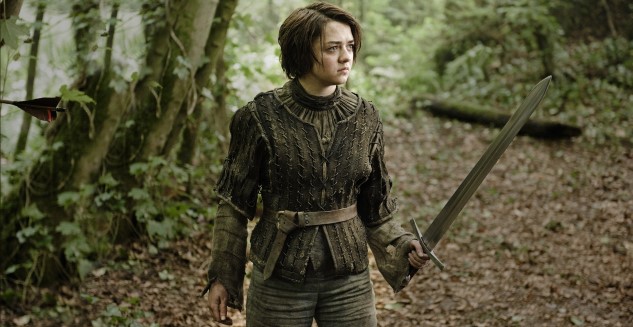
The “young lion” is a trope of Japanese pro wrestling in particular, in organizations such as New Japan Pro Wrestling. They’re portrayed by young men who are essentially wrestlers in training—guys who are expected to completely commit their lives to rigorous physical and mental training, while living together in the communal “wrestler’s dojo” and doing physical work (cooking, cleaning, scrubbing floors with toothbrushes) in order to “pay their dues.” If they appear in matches, they wear plain black clothing and invariably are there to lose to more experienced wrestlers. In general, “young lions” don’t have individual characters of their own—they’re training and improving for the eventual day when the organization will deign to gift them with an identity.
Now, who does that sound like? Arya Stark is a straight-up young lion, especially once she makes her way to the House of Black and White to train among the Faceless Men of Braavos. Her training revolves around the abandonment of self, exactly as a young lion must humble himself to gain the respect of the dojo. And like a young lion, who is eventually rewarded with a real character of his own, Arya ultimately rejects the path of the Faceless Men to reclaim a newly strengthened identity as Arya Stark of Winterfell. Her return to Westeros is her own babyface “coming out party,” with all the pomp of a debuting new babyface wrestler who is set to make a splash in the fed. It’s clear there are still big things in store for Arya—could she have the bearings of a future champion?
Grizzled veteran face
Game of Thrones characters: Ser Jorah Mormont, Ser Barristan Selmy

Sometimes, a babyface has simply been around for too long, and seen too much. These characters are unanimously respected or admired, but they may no longer be properly feared—age and degradation have taken them down a notch from their glory days. Sometimes, these types of wrestlers have settled into mentorships or manager roles, grooming younger talent. Other times, they’re consumed with an obsession for earning that one last title shot to prove they’re still relevant, and want to go out fighting—see the likes of Ric Flair, Terry Funk or The Undertaker in the wrestling world. One thing is certain: It’s difficult for these guys to ever play a true heel, because the crowd has such respect for their career full of accomplishments that no one wants to boo them.
In Game of Thrones, that role is neatly filled by the likes of both Ser Jorah and Ser Barristan—and hell, Ser Davos as well for that matter. The fact that they’ve all earned “sers” is no coincidence. Some are more “admired” than others, such as Ser Barristan, but all have the respect of the troops because people know how competent and battle-scarred they are. These are the types of guys that a young lion or hotshot young knight might challenge in an attempt to make a name for himself, but more likely than not they’ll end up humiliated (or dead) for underestimating a grizzled warrior who still has plenty of fight left in him.
Quirky tag team forced to coexist
Game of Thrones characters: Varys and Tyrion Lannister

Wrestling tag teams are typically formed by similar or like-minded individuals, but occasionally the two members of a team aren’t so much “willing partners” as they are two guys thrust together by circumstance or by decree. Heel authority figures love doing this as a means of exercising petty control over members of the roster they disfavor, forcing them to team up with guys they’ve recently been fighting, etc. That way, every match furthers a storylines of “but can they work together?” These tag teams are often highlighted by two wrestlers with extremely different characters or gimmicks—perhaps one is a giant, and the other is a cruiserweight, or one is a do-gooder and the other is a chickenshit heel.
In Game of Thrones, everyone’s favorite wheeler-dealer Tyrion forms exactly this sort of strange bond and working relationship with The Spider, Varys. There does seem to be some genuine affection here, or at least a mutual respect for the guile that comes naturally to each man, but physically they could hardly be more dissimilar. Varys is of course a eunuch and above any personal peccadillos, whereas Tyrion’s attempts at romance are more or less the source of all his personal misfortunes, aside from the fact that he was born as a dwarf. They make a surprisingly good team, but they’ll never be the tag team that marches to the ring in matching uniforms and hairstyles.
That woman who fights men
Game of Thrones character: Brienne of Tarth
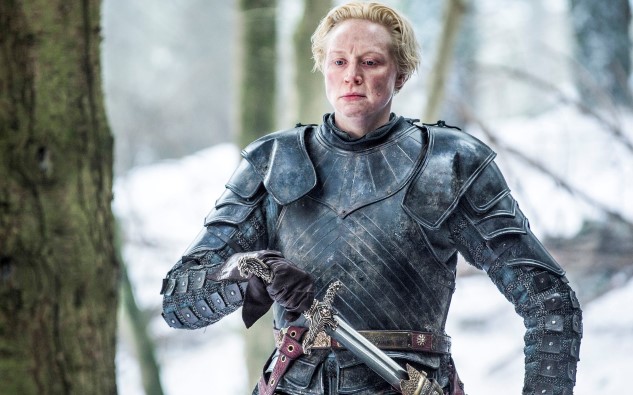
It may not be wholly accurate to characterize this archetype as automatically face, but the women who have played it tend to become faces thanks to the audience reaction to them. In pro wrestling, it should be noted that female wrestlers have had a much more difficult path to respectability and prominence than men. Many federations don’t even have “women’s divisions,” and major feds such as the WWE have horrendous track records of sexism and objectification. However, an industry-wide revolution is currently underway, in which women are being afforded significantly more respect, marketability and airtime. At the same time, the biggest female stars of the past were often women who were physically exceptional—in other words, big enough to fight against men, which tended to be presented with “freak show”-esque spectacle. This included the likes of Chyna in the WWF, or Kia Stevens (“Awesome Kong”/“Amazing Kong”) in TNA and elsewhere. In the modern women’s revolution, even some female competitors with more average proportions have made a name for themselves scrapping with the men, such as Candice LeRae, who has famously walked out of such matches in a bloody mess.
In GoT, this is quite obviously Brienne of Tarth. Brienne notes that she’s often been mistaken for a man in her career as a professional soldier; understandable given her imposing size and the fact that she’s often wearing armor. She’s a fearsome, powerful warrior, able to physically overwhelm almost all of the average Westerosi fighters she’s put against, and even hold her own against masters such as Jaime Lannister and The Hound. It certainly doesn’t feel too far off from the kind of physical presence that Chyna represented during her initial run in the WWF. And like Chyna, Brienne is ultimately one of the purest of faces on Game of Thrones, an exceedingly honor-bound woman who puts her responsibilities and oaths above all else, including her own self-interest.
Comedy jobber
Game of Thrones characters: Samwell Tarley, Hot Pie
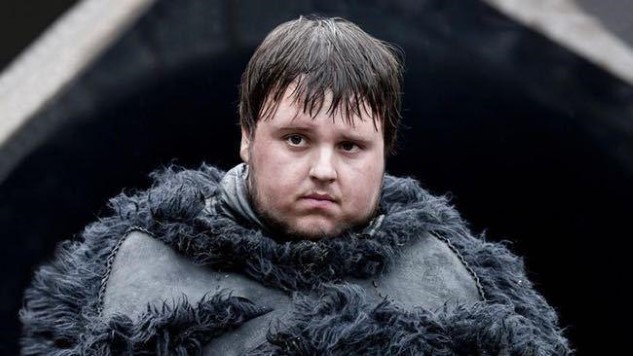
The duty of a “jobber” in pro wrestling is to lose—they’re the fall guys of the entire industry. The reasoning is thus: You can’t build up the serious talent without having a handful of dopes around who consistently get beat up by them, because that’s how you create tiers of “this guy is better than that one.” Jobbers are also likely to have a comedic element to them; hapless losers or comedy relief who are prone to pratfalls, physical comedy or zany misunderstandings. In some cases, they may be the more nerdy or bookish characters who don’t excel physically, but still have important insight to share. And occasionally, in the rarest of circumstances, they might get a huge underdog victory that makes the crowd go ballistic. They can take any alignment, but most often they’re faces.
What else would one call a character with a name like “Hot Pie”? The dude is a jobber, although he makes some good bread. Sam, on the other hand, is a more robust, important and interesting character who is still defined by his physical limitations on some level. He’s not a skilled warrior, but he makes up for it in other ways, while still bringing a fair amount of physical comedy to Game of Thrones; at least when compared with everyone else. His occasional victories, such as that time he successfully killed a White Walker, usually come down to pure luck more than anything else, such as the fact that he happened to attack the wight with a dragonglass dagger. This is a classic jobber trait—they will rarely score a huge victory, but often it’s because of outside interference or some stroke of divine luck outside of their control.
![]()
Tweeners
Not everyone can be clear-cut babyface or heel—some folks are just caught inbetween. Thus, they are the “tweeners,” which, despite the name, doesn’t automatically make them popular with the 11-year-old audience. Typically, they’re wrestlers who have been aligned with both good and bad factions, or they’re trying to pull off an antihero “lone wolf” gimmick that sees them acting as a badass neutral. Rather than getting swept up into wars of one faction vs. another, they usually are going into business only for themselves, to improve their own standing or work their own agenda. They may simultaneously have allies and enemies who are both faces and heels. Suffice to say, they’re more rare than either faces or heels, as you can only be a tweener if there are two sides to land between.
Badass anti-authority rogue
Game of Thrones character: Daenerys Targaryen
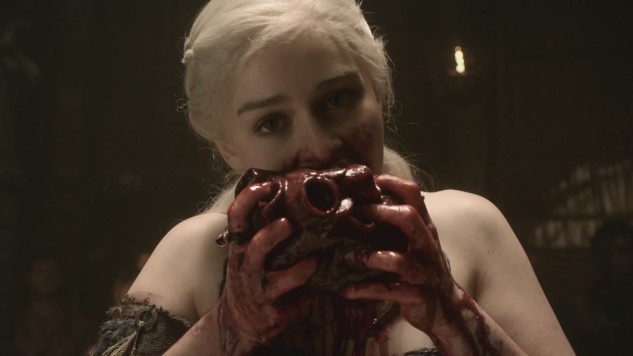
Dany is the closest thing that GoT has to a wrestler like Sting, during his “Crow” period in WCW in the ‘90s. Crow Sting would watch from the sidelines, or high above in the rafters, looking cool and menacing, observing the action but not really getting involved. In doing so, he became immensely popular, in a way that is difficult to even quantity. The question was always “who’s side is he on?” Which way would he go? What agenda is he working? One thing is certain: He was against the status quo, and the ruling authority.
And that’s our girl Dany, the Mother of Dragons. Like Sting, or an Attitude Era “Stone Cold” Steve Austin, Daenerys is the champion of the little people and the oppressed, freer of slaves and the woman who stands up to the evil bosses of this world. She’s not above getting dirty to fight for what she believes in, and she’s left more than a few semi-innocent bodies in her wake. As season 7 approaches and Dany sails across Narrow Sea with invasion on her mind, she’ll be directly mirroring Steve Austin’s quest to take down WWF owner Vince McMahon, and you better believe she’ll be ready to stomp a mudhole in anyone who gets in her way.
The hired gun
Game of Thrones character: Bronn
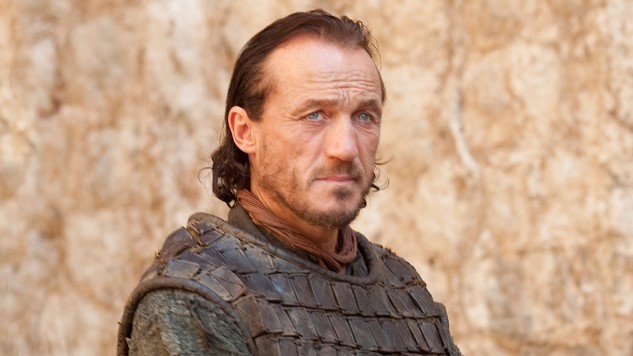
Sometimes, wrestling will present us with a character who is made out to be a true mercenary—a guy who will work for the highest bidder, and whose primary motivation is to make bank and then maybe ride off into the sunset. They’re often used as protection by other characters or wrestlers who need backup, but they can be mercurial—you never know when someone is going to make your hired muscle a better offer, which means you can never sleep too deeply unless you’ve got the deepest pockets in the land. In the WWF, the preeminent example is the APA, a “protection” agency of Bradshaw and Ron Simmons who were available to hire to the highest bidder. If you paid for their services, they’re happy to stomp whoever you want stomped.
The Game of Thrones equivalent is of course the popular Bronn, who Tyrion first hires after he saves his life in the Eyrie. Coming from the Lannister family, Tyrion has exceedingly deep pockets and vast resources, which makes him attractive as a client for Bronn the sellsword. Of course, Bronn eventually does develop some fondness for his often irritating dwarf employer, but in the end Bronn’s goal truly is to retire and live the good life with an appropriately attractive noblewoman. He’s the consummate professional, in the sense that he doesn’t really take a lot of personal pleasure from fighting and killing—he just does it because that’s what he’s good at, and he has no other marketable skills. He seems to recognize the futility of war and the ever-turning wheel of power that Dany mentions, and as a result, he’s one of the most down-to-Earth characters on the show.
![]()
Heels
Ohhhhhh boy. I know this is what you’ve been waiting for, folks. Now that we’ve gotten those tedious babyfaces out of the way, we get to talk about THE HEELS of Game of Thrones. Because really, in the end, this show is all about the heels. There are far more heels in Westeros than there are faces, and the heels also tend to be more interesting, exactly as they are in pro wrestling. It’s often said in wrestling that it’s easier to portray a heel than a face, because heel heat (which is to say, boos) is easier to achieve than genuine cheers. The same thing could be said of Game of Thrones, where the villains find it much easier to inspire hatred rather than love and devotion. For most characters on this show, betrayal and backstabbing is the impulse that appeals to them most strongly. They make up the below stable of surprisingly varied heels.
Chickenshit heel
Game of Thrones character: Joffrey
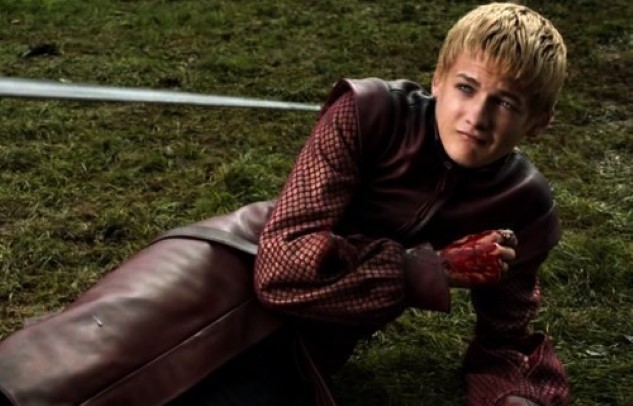
The classic, cowardly heel is the cornerstone around which pretty much all heel work is based. Heels can’t be brave and bold, or they run the risk of developing popularity among the audience. They need to cheat and scrape for every possible advantage, to break the rules and above all else, show that they’re ultimately cowards, which the audience is meant to detest. This is the “chickenshit heel,” the guy who is always running away from fights and finding excuses to avoid his enemies. He schemes; he plots; he turns tail and runs at the first sign of adversity. He’s cocky and swaggering when he has the upper hand, but groveling and sniveling as soon as things aren’t going his way. He’s the guy you love to hate.
Who else could that be in Game of Thrones but Joffrey the antichrist child king? From the moment we meet him, it’s clear that Joffrey is a petulant psychopath in training, but unlike fellow psychopath Ramsay Bolton, he has no bravery to carry out any of his own battles. Joffrey’s inherent cowardice always insists on letting others fight for him, and even in situations such as the siege of King’s Landing, he wusses out of even the most basic commitment toward rallying the troops and acting as a military figurehead. Joffrey is infuriating for all the same reasons that a chickenshit heel is supposed to be infuriating—he talks a big game when he has you in the palm of his hand, but he recoils and shrinks from any challenge that is actually dangerous to him. Everything about him is calculated to be detestable.
Monster heel
Game of Thrones character: The Mountain, Gregor Clegane

In wrestling, the monster heel is more or less the polemic opposite of the chickenshit. Unlike most other heels, he’s not inherently a coward. Rather, he’s a raging, indestructible force of nature who enjoys demolishing everyone in his way. This type of heel, typically a huge guy or “giant,” often embarks on a long winning streak after joining a promotion, squashing lesser competition on a weekly basis to establish his moveset, physical presence and build up an aura. That “aura” is everything to a monster heel—they need to look totally unstoppable, unbeatable, impervious to pain and injury … until they go up against the star babyface of the company in a hugely promoted match. Monster heels also tend to have a shorter shelf life than other varieties of bad guys, because once they lose for the first time, they typically lose their aura of invincibility. They either destroy the babyface, or they lose and tumble back down the card.
Gregor Clegane fits the title of “monster” better than anyone else in the GoT universe, and there are no shortage of other applicants. Even before his more recent transformation at the hands of Qyburn, The Mountain has always been implied to be more or less pure evil, making his brother The Hound look like a swell fellow in comparison. He’s utterly ruthless, using his massive size and strength to cut men and horses apart with his huge greatsword. He’s a rapist as well, having violated Elia Martell and earned the wrath of Oberyn, who almost succeeds in putting an end to him. Like a true monster, though, The Mountain has risen from the ashes in an even more grotesque fashion, having been turned by Qyburn into a silent, Frankensteinian golem of pure destruction. Lord only knows where he’ll go from here, but it’s going to be a huge feather in the cap of whichever face manages to eventually take down this monster heel.
Prettyboy heel
Game of Thrones character: Jaime Lannister
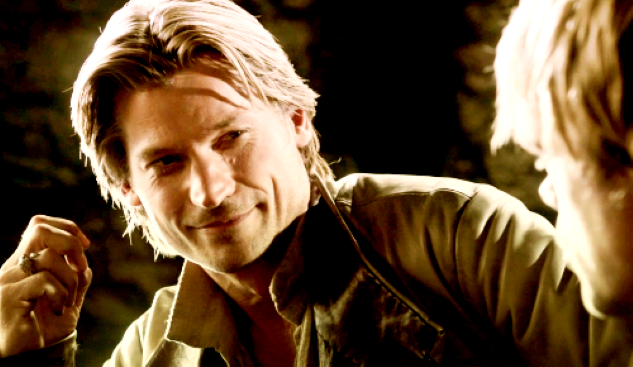
Some folks are just too beautiful to be hanging around with the uggo peasants. The prettyboy heel’s defining trait is his vanity and narcissism. He may be supremely skilled, ‘ala Rick Rude, but he’s still way too enamored of his own prowess or physical perfection. The character archetype taps into the audience’s own lack of self-confidence and self-loathing, as the narcissist preens and brags about the wonderful life he leads as a beautiful person—something that YOU PEOPLE in the stands will never experience! He’ll almost certainly have elements of chickenshit heel to him, but he also tends to be pretty deluded about how the world sees him.
Jaime Lannister has certainly come a long way since we first met him, but in his original incarnation from season 1, he was 100% the prettyboy heel. Never forget (as so many fans seem to do), that this guy pushed Bran OUT A WINDOW and attempted to murder a child at the drop of a hat. The fact that we, the audience want to forgive him is a trait of the prettyboy heel in and of itself—they’re attractive and charming, and thus they tend to sucker people in repeatedly, even after they’ve burned them before. No doubt it was these types of qualities that allowed Jaime to get deep enough in the Mad King’s favor that he was able to slay him in the first place. Today, a more weathered (and handless) Jaime has shed some of these qualities, but Loras Tyrell certainly shared some of them as well.
Token foreign heel
Game of Thrones character: Melisandre
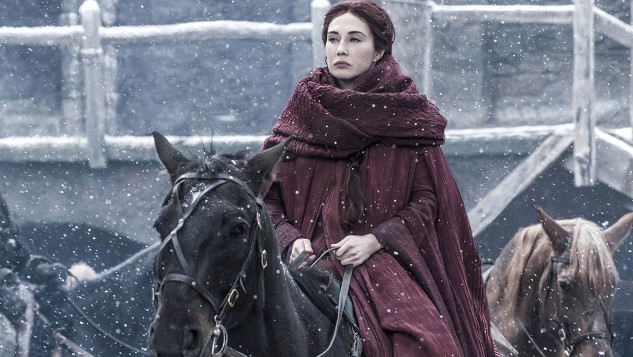
There’s no cheaper heel heat in the world of pro wrestling than “I’m a foreigner,” something that Futurama once brilliantly parodied with a robot wrestler screaming “I’m not FROM here! I have MY OWN customs!” It’s the most basic and easily exploitable of all heel characters, catering to the xenophobia of the audience, misrepresented as “patriotism.” Even in 2017, these gimmicks still work on a non-ironic level, and you’re likely to end up with “USA! USA!” chants even when both the face and the heel in the ring are Canadian dudes. In recent years, the WWE’s Rusev has been the most prominent example, coming in as a throwback foreigner heel with Russian backing. It’s infinitely reusable, as the country of origin can always be tweaked to whoever the U.S. currently has beef with. Perhaps in the next few months we’ll see the emergence of a despicable North Korean heel?
In GoT, Melisandre stirs up many of the same emotions in Westeros. Clergy of the Lord of Light aren’t so uncommon across the sea in Essos, but on Westeros, she’s very much a representation of The Other, especially in a visual sense. Her crimson robes and hair are unlike just about anything else you see on the continent, and the soldiers who witness her “miracles” and powers regard her with a mixture of superstitious fear and godlike awe. There’s a strong undercurrent of xenophobia in the GoT universe that most citizens seem to feel for anyone who hails from outside their borders, and Melisandre is a stranger to the entire continent of Westeros. She represents a belief system that intends to violently topple of the Faith of the Seven in its entirety and disrupt the Westerosi way of life. It’s understandable why people fear her.
Mastermind heel
Game of Thrones characters: Petyr Baelish, Cersei Lannister
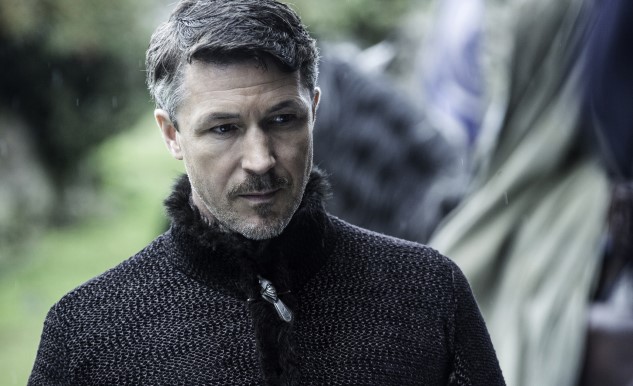
The most dangerous heels are the ones who don’t necessarily need fists to do their dirty work. The history of pro wrestling is rife with these masterminds, people orchestrating kayfabe lives from a place of safety. Sometimes they take the form of heel managers in the mold of Bobby “The Brain” Heenan or Paul Heyman, who can hide behind a muscular frame and direct their personal goon squad to do their bidding. Other times they’re authority figures for the entire federation—exactly the sort of character that Vince McMahon has consistently played since the Attitude Era. The constants are that they’re very intelligent, very ambitious, very charismatic and very willing to do whatever it takes to get to the top. They’re the most dangerous of allies, as they’re probably planning a contingency that involves throwing you under the bus.
Game of Thrones actually has a lot of potential masterminds, but Littlefinger and Cersei are perhaps the two most successful and deadly. Neither of them are really warriors, and both prefer to keep their own hands clean whenever possible. Their weapons are deceit, trickery, spy networks and taking advantage of the prowess of others. Cersei, for instance, falls back upon The Mountain’s strength in deciding her trials by combat. She also engineers the destruction of pretty much all her adversaries in one fell swoop when she blows up the Great Sept of Baelor with wildfire, although it naturally has unforeseen consequences. Baelish, meanwhile, has been playing a long con game his entire life as he slowly rose from total obscurity to have his fingers on the pulse of the empire. He tricked a mentally unstable woman into marrying him, then killed her in order to take over lordship of The Eyrie. There’s no telling how far he can ascend, and only rarely has he ever been forced to engage in face-to-face battle. That’s quite the accomplishment, in this setting.
Raving lunatic psycho heel
Game of Thrones character: Ramsay Bolton
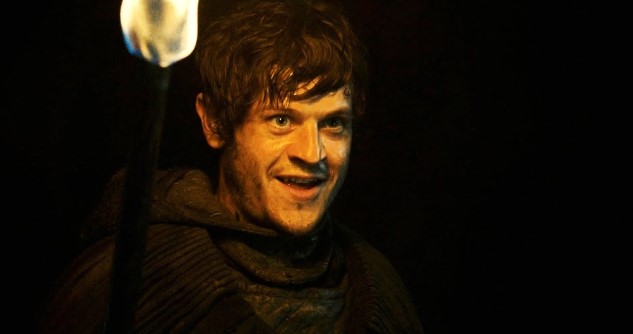
Some heels are just pure psychopaths. That might make them initially sound like a Monster Heel, but the difference is that these guys are also capable of being cunning rather than brutish and simply relying on on their size and strength. Perhaps this wrestler is a master technician, with an arsenal of holds and he focuses on torturing an enemy’s joints until he just gives up. One thing is for certain: This guy loves to inflict pain. He loves to hurt people even more than he likes to win matches or championships, in fact. A psycho heel is perfectly happy to get himself disqualified by doing something such as using a weapon, if it means it gains him an opportunity to beat the tar out of someone. They might occasionally make alliances with other heels, but as true sociopaths, no one can trust them.
Who else but Ramsay Bolton could fit such a moniker? It’s not easy to become a clear cut favorite for the title of “worst person on Game of Thrones,” but Ramsay somehow makes it easy. He’s a total monster, the kind of guy who would make most despots cringe. The only other character who comes close is Joffrey, but Joffrey is only a budding psychopath, and a coward. Ramsay Bolton is anything but a coward. He’s frighteningly intelligent as a tactician, which only makes his enjoyment of physical and mental torture all the worse. What he does to Theon (a character who is pretty unlikable himself) goes beyond “cruel” and into a realm of actions that are almost alien to us because they’re so complexly evil. When you engineer a fake escape for your prisoner, just so you can rub his captivity in his face, then you’re doing next-level heel work.
Evil aristocrat
Game of Thrones characters: Tywin Lannister, Xaro Xhoan Daxos

This is the classic “I’m rich and important” heel, one of the oldest staples of pro wrestling bad guys, who believes that all the commoners are garbage unworthy of his attention. The classic wrestling comparison would be Ted “The Million Dollar Man” DiBiase, who would gain heat with the audience by paying off wrestlers rather than fighting them. Essentially, this guy is like a chickenshit heel, but with significantly more resources at his disposal. Stuffy and pompous, they often make you wonder why they’re here taking part in this competition at all, when they could be relaxing on a private island somewhere. The answer is that in their heart of hearts, these guys want power, because they define themselves by being lordly over everyone else.
Tywin Lannister and Xaro Xhoan Daxos (that merchant prince from Qarth who tries to marry Dany in the second season) both fit different aspects of the aristocratic heel mold. Their power flows from their wealth, or from the appearance of wealth. As it turns out, neither actually has as much coinage as they imply to the outside world. Daxos has an unbreakable vault that turns out to secretly be empty, while Tywin has been using up the last meager bits of the Lannister treasury after hiding the failures of their longtime gold mining operations. These are secrets that need to be kept, as the vast array of manpower at their disposal is dependent upon their aura of affluence. This is of course how you ultimately humiliate an aristocratic heel most thoroughly, by hitting him in the thing he values most: His pocketbook and prestige.
Leader of feared stable
Game of Thrones character: The High Sparrow
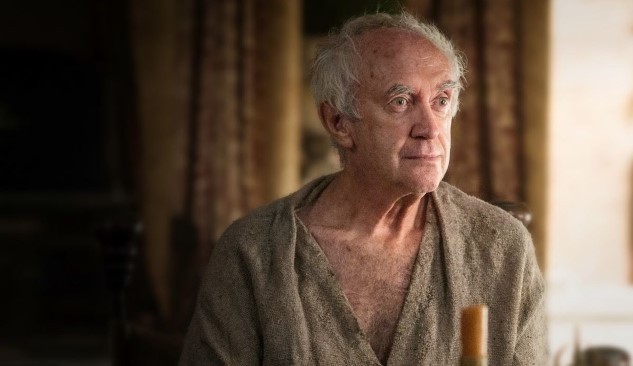
A “stable” is wrestling shorthand for a group or faction; an assembly of wrestlers who form a team and all cover each other’s backs. The most famous and industry-changing was of course the NWO (New World Order) in late ‘90s WCW, but stables have been an important part of the wrestling industry for far longer. Classic groups such as the Four Horseman refined the format, but the one thing they all have in common is that they’re typically led by a single charismatic leader, or a small council of them. A classic example here might be The Undertaker’s Ministry of Darkness, at least until he sold the stable out to aristocratic/mastermind heels Vince and Shane McMahon. But in general, the leader of a stable will never be the first member of the group that volunteers for a fight. In true videogame fashion, you have to get through the lesser members before you get a chance at taking down the man in charge.
King’s Landing was most assuredly not ready for this kind of stable in the last few Game of Thrones seasons, and as such they were taken almost completely unaware by how powerful the Faith Militant quickly became. The soft-speaking High Sparrow was a perfect stable leader; able to generate sympathy from both the common man and even from king Tommen himself. Unleashing him in the first place was one of Cersei’s biggest blunders, as she badly underestimated both his fervor and his ruthlessness in enforcing his interpretation of the law of the Seven. Ultimately, it’s hard to say how powerful the High Sparrow could have become, as his influence continued to increase in King’s Landing. Of everyone that Cersei managed to blow up in the demolishing of the Great Sept of Baelor, the High Sparrow was probably the most significant. It can be assumed that without its leader, the Faith Militant won’t be nearly as fearsome.
Jim Vorel is a Paste staff writer and wrestling metaphor-maker. You can follow him on Twitter.







































